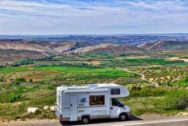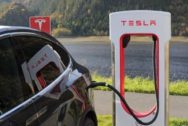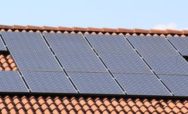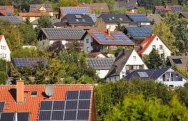When the blades stopped turning
https://www.off-grid
Auto Amazon Links: No products found.
https://www.off-grid
Auto Amazon Links: No products found.

Cooking can be challenging in itself. Following recipes, getting the right ingredients and hoping it comes out tasting delicious – unless you’re a top class chef, everyone has had a fair few burnt dinners in their time. When you’re off-grid however it’s not just worrying about what it tastes like, but how to cook the food in the first place!
Solar cookers have been on the market since the mid-80s and have become a popular option for safe and easy cooking with no fires or fuel involved. There are obvious benefits to solar cooking, after the initial investment it is a free renewable source of energy. Not only this, but it is seen as a healthier way of cooking without smoke from fires etc.
Solar cookers convert the sun’s rays to infra-red radiation producing heat. Therefore, it is not the sun’s heat itself or the ambient air temperature outside the cooker that causes the food to cook.
The solar box cooker is derived from a box with reflectors that funnel the sun’s rays into the chamber which contains the food to be cooked. These models can reach very high temperatures, on average between 200-350°F, which is ideal for most baking needs. With a good heat retention and little need for supervision it is perfectly safe to leave food for long periods without fear of burning. Being a box shape these cookers are less likely to tip over and when constructed will have high levels of insulation.
The solar panel cooker on the other hand doesn’t reach temperatures quite as high; between 200-250°F. Essentially the design is a pot or pan within a plastic enclosure, with a 3-5 side reflective panel surrounding it to channel the sun’s rays. This type of design is best for slower longer cooking periods, leaving food very succulent. With no adjustments needed to track the sun, little supervision is needed.
Finally, the solar parabolic cooker can maintain the highest temperatures of the three main types and so can be used for grilling or even frying food. It can cook food much quicker, however usually smaller amounts than what can be held in the box or panel solar cookers. Also more attention is needed when cooking using this model, as the angle and direction of the cooker will need to be changed more frequently to track the sun.
There are many plans and designs for you to try if you want to have a go at a DIY solar cooker. Many designs include using materials commonly found around the home or are easily obtainable. For example, cardboard boxes, aluminium foil, black paint, some form of adhesive and even umbrellas!
American families have been going off-grid for more than forty years, but for most it’s a gradual process, involving a lot of learning by trial and error. In a recent article published in Reason, J.D Tuccille wrote about how his experience going “semi-off-grid” in 2008 led him to reconsider his attachment to the mains, and begin a journey towards self-reliance that is still ongoing today.
Dipping into off-grid waters
In 2008 a power failure lasted a week at J.D’s former home in remote Arizona. While he had his own well, it was controlled by a pump that required electricity, and the surface of the water was too low to dip some out by hand. Then there was the issue of modern plumbing without electricity, and the requirements of coffee pots to consider. However, outages were common – so J.D had come prepared. He and his wife Wendy Wendy had stored water, cut firewood, and fueled up the camping stove and lanterns. They remained hydrated, warm and fed through that and every other experience with the electric grid’s unreliability.
“All in all, it was a bit Little House on the Prairie for our tastes, though with a better wine selection – but ultimately more of an inconvenience than a disaster,” he wrote. “But tolerance for inconvenience can decline with the years.”
When they moved to a new house in the foothills, Wendy had a strict requirement – a climate-controlled environment in the house at all times. This required some research into the best off-grid power systems to use for the climate, so J.D had to get serious.
“This being Arizona, where everything bakes for much of the year under the fireball in the sky, my first thought was solar,” J.D writes. “But I quickly discovered that all of those panels adorning people’s roofs were nothing more than expensive shingles during a power outage. Most solar installations are designed to feed the grid, not keep you independent of it. I priced adding batteries to the mix to gain some autonomy, but they more than doubled the cost. And batteries couldn’t handle the power demands of an air conditioner anyway. So we settled, if that’s the right word, for a 22 kW standby generator, which can handle the well pump and keep the air conditioning running.”
He said they were “especially pleased” with the decision when the European Union completed a coordinated cyber-attack simulation and found it leading to a “very dark scenario,” including crashed power grids.
J.D also beefed up the water storage capabilities at the house with rain barrels hooked to the gutters, which are conveniently located near the garden where he now grows tomatoes, olive and fig trees.
“Wendy and I have stumbled down our path incrementally over the years out of a combination of necessity and curiosity,” he writes. “We also keep tweaking our set-up. In addition …

Batteries to store the excess energy that solar panels capture have advanced only slowly in the past 20 years …until now. Tesla has come up with a new approach it claims is faster cheaper and better – the Powerwall 2.
This wall or floor mounted battery pack has twice the energy of Tesla’s first generation battery, with 13.5kWh of storage. Each pack has up to a 7kWh power output, with a continuous 5kWh output on average. A liquid thermal control (coolant) system helps to regulate the internal temperature of the battery, maximising its performance. Whilst the water resistant, dust proof casing allows for outdoor or indoor installation.Up to nine of these 120kg units can be stacked together to power homes of various sizes.
Alongside these features, the Powerwall 2 has an inbuilt inverter. Not only does this save on space, it means there’s little chance of error as it doesn’t need to be hooked up to an inverter from a third party. Other battery makers such as LG Chem have to use inverters produced by other companies, making Tesla unique in this feature.
One 755mm x 1150 mm x 115 mm 14kWh Powerwall 2 battery costs $5,500 (£5,400) with installation costs starting at $1,500 (£950). Each pack comes with a 10 year warranty and the first installations are due to begin in early 2017.
Tesla is also in the process of bringing out their range of solar tiles. These come in four styles, from Tuscan to slate glass. They are opaque from the street but transparent from above, allowing the suns rays to penetrate the tile and the solar panels within to capture energy.
The use of a Powerwall 2 pack with solar panels enables homes to become self-sufficient in providing their own energy. Tesla CEO Elon Musk has a clear vision of an affordable, integrated power generation and storage system which can be rolled out across whole neighbourhoods, allowing whole streets and communities to be off-grid.
Prices of the new Tesla solar tile range are yet to be released.
Auto Amazon Links: No products found.

A small community in South Yorkshire, UK has been targeted for a trial involving solar power and smart batteries. Forty homes in near Barnsley are having smart batteries installed at the end of January. Moixa, Northern Powergrid and Energise Barnsley are all collaborating on the £250 million ($308 million) project.
Moixa Batteries USB port
The Moixa batteries are smaller than a boiler (50cm x 30cm x 20cm), wall mounted with a 20 year lifespan. They even have a USB port so phones and other devices can be charged direct from the battery. Normally costing above £2,500 ($3,000), the residents received their batteries free of charge, with distributor Northern Electric footing the bill. 30 of the homes had solar panels, allowing them to be further independent of the grid. The batteries have good saving potential, giving the residents another reason to be positive about the trial.
The batteries allow residents to use the excess energy their solar panels generate during the day, at night time. They store the energy produced instead of transmitting it to the grid. This will relieve pressure put on the electricity network during times of high output but low demand. It is this reason that prevented the energy company Energise Barnsley placing more homes with solar onto the trial. Without expensive upgrades it is infrastructure which is limiting the number of homes that can have solar power. A project in Carmarthenshire, Wales, faced a similar problem, with only 37% of homes being able to connect with solar energy.
Lower Carbon
As outlined in Moixa’s press release, CEO Simon Daniel stated, “Batteries will allow the electricity system to support much higher levels of low carbon renewable power and increase UK energy independence.”
Linking the batteries in a virtual power plant system allows Moixa to make the wider grid more efficient, causing less need for back up from non-renewable sources. If rolled out across the country, millions could be saved by reducing the peak solar output onto the electricity network.
If the trial is successful, batteries could hold the key to UK energy independence.
Auto Amazon Links: No products found.
A new off-grid system is capable of generating 75 kilowatts and storing 250 kilowatts hours of energy. Now that’s impressive!
Last week, ATCO announced their groundbreaking solar project in Western Canada. The Grande Prairie POD Transmission at the Saddle Hills Telecommunications Site is needed to meet increased power demand in the area.
“Through this project, we have gained valuable insight into the application of off-grid solar solutions, directly transferable and scalable for our customers in other sectors,” said Paul Goguen, Senior Vice President & General Manager, ATCO Electric Transmission Division.
“This is just one example of how ATCO is finding opportunities to economically reduce our carbon footprint while exploring innovative clean energy solutions for our customers.”
This is great news, but why didn’t it happen any sooner if ATCO is seriously trying to cut down on their carbon footprint?
Propane thermal electric generators previously powered the site where the system is being built. As the generators neared the end of their life cycles and the need for power at the location grew, ATCO had a vision for a cleaner and less expensive way to keep the site up and running – solar energy.capstone project,
They didn’t make the transition alone though, to make sure that the switch was technically viable and cost-effective, they joined forces with the Alternative Energy Capstone Project and outlined the technical challenges of building and maintaining solar panels in a remote location (e.g. cooler climate, fewer hours of daylight etc.)
The project is one of many that ATCO is undertaking; a full list can be viewed here. The timeline for the scheme so far is as follows:
Auto Amazon Links: No products found.

Meet Scott Hunt, also known as Engineer775 on his Youtube channel where he gives expert reviews for National Geographic’s reality TV show, Doomsday Preppers.
His religious stance has made him plan accordingly to doomsday, plans which include his and his families 55-acre farm near Pickens being totally sustainable if, oh let’s say out our nation’s electrical grid, shut down its water supply or render its computers useless.
But don’t think of him as gloomy, the creative genius is actually very energetic and he has made a “booming business” out of helping others get prepared for whatever may come.
On the farm, they grow their own food, generate their own electricity, maintain their own water supply and powers their machinery with fuel made from their own wood.
It has elevation change, which can be used to provide a gravity-powered water system. He pumps water from a well low in his topography to a high point on his property and sends it flowing downhill from there to his house with the twist of a faucet.
The tract has ample trees, which he looks on as “solar batteries.” He uses them to fire a 500,000 BTU boiler that provides hot water to his house, and a wood stove for heat and cooking, and for gasification, using a process developed by the Germans during World War II.
With the success of their own off-grid living arrangements, Scott is a consultant and installer of solar-powered water systems and other devices for others who like the idea of being unplugged.
“I feel like that’s what my calling is right now – to help many people as possible,” said Hunt, a former pastor, former Michelin engineer, and upstate New York native.
Tinkering is in Hunt’s genes. He comes from a family of tradesmen. His father was an auto body man. His grandfather was a carpenter and operated a lumber yard. He also went to university to study engineering which is where he found God.
“Some people just want to go off the grid. Some people want something sustainable. Some people are into preparedness big time,” he said. “I just provide solutions that make sense.”
His homestead was ideally suited to become his laboratory for developing self-sufficiency solutions.
If you’re interested in learning some of his tricks, most of his business comes from the Internet. He has a store on his website, www.practicalpreppers.com, from which he sells and drop ships items such as solar water pumps, and his book, “The Practical Preppers Complete Guide to Disaster Preparedness.”
Auto Amazon Links: No products found.
A current and interesting look at solar power today,we have truly come a long way. Of course battery technology is still pretty far behind, prices for solar panels have dropped significantly over the past few years making it affordable for more and more people,and the solar panel kits make it simple to get exactly what you want to get started.
https://youtu.be/nabM5MGq_NY
Auto Amazon Links: No products found.

BERLIN, Nov 25 (Reuters) – German battery maker Sonnenbatterie has launched a scheme to connect households with solar panels together with their neighbours, and other consumers. the aim is to better distribute surpluses of renewable energy and help members to become more independent of conventional suppliers.
The start-up company hopes the scheme, called “sonnenCommunity”, will boost demand for its batteries which store solar power, allowing owners to use the clean energy even when weather conditions are not favourable.
“SonnenCommunity allows all households that want to determine their energy futures themselves the access to affordable and clean electricity,” said chief executive Christoph Ostermann at the project’s launch on Wednesday.
The initiative comes at a time when battery technology, long seen as expensive, is approaching a point where ordinary householders can afford it.
By storing solar power and releasing it on demand, households can avoid having to buy more expensive power off the grid to supplement their production. The batteries could also help solar power households cope with a phasing out of subsidies currently paid when surplus power is sold to public grids.
Sonnenbatterie has sold 8,500 lithium battery units, saying this makes it the European market leader.
Germany has around 25,000 batteries in operation that can store solar power – still a small number given there are around 1.5 million solar production units, mostly located on roofs of family homes – but year-on-year sales are growing rapidly.
U.S. electric vehicle maker Tesla is also looking to enter the market. It plans to start delivering wall-mounted batteries that can store solar power to Germany in early 2016.
SonnenCommunity takes the storage idea a step further, allowing solar power to be shared among its members.
Sonnenbatterie said the scheme would initially target the 1.5 million solar power producers who, if they sign up to the community, will receive a battery storage system with a starting price of 3,599 euros ($3,812). But eventually, the offer will also be open to non-producers, it added.
If the idea of battery-powered buildings takes off, it could pose a challenge to traditional utilities such as RWE and E.ON, which still derive the bulk of their power from big centralised power stations running on fossil fuels.
($1 = 0.9442 euros)
Auto Amazon Links: No products found.

Increasingly it is big business that is taking a leaf from the off-grid philosophy.
Australia’s largest integrated off-the-grid solar power system will be up and running in 2016 at a copper mine in remote Western Australia.
The 10.6 million megawatt station, which is part financed by Government green loans, is expected to provide Sandfire Resource’s DeGrussa mine with 80 per cent of its daytime energy needs and slash carbon emissions by 12,000 tonnes a year.
Construction work on what will be one of the world’s largest integrated solar installations used to power a mine is due to begin in late July.
Sandfire’s chief operating officer Mike Spreadborough said the power station will reduce the mine’s reliance on diesel fuel.
“By integrating diesel with solar power we’re significantly saving, it’s much cheaper than the historical costs of other fuels,” Spreadborough said.
“It’s a double-whammy result in lowering energy costs with significant environmental benefits.”
More than half the A$40 million ($44.6 million) solar power and battery storage facility’s cost was funded by federal Government loans, with the Australian Renewable Energy Agency (ARENA) putting up nearly A$21 million.
The federal Government’s other green lender, the Clean Energy Finance Corporation (CEFC), committed up to A$15 million while French renewable energy firm Neon, which will own the power plant, made up most of the difference.
Details about the project follow the federal Government’s decision to redirect wind farm funding to bolster large-scale solar projects.
The decision to direct the CEFC to pull funding for wind farms in favour of large-scale solar projects and new technologies drew criticism from the Greens, opposition and the Victorian state Government.
ARENA was also instructed to refocus on larger-scale solar and thermal energy products.
Sandfire’s sprawling project will feature 34,080 solar panels spread over 20ha.
The company hopes the solar plant, which will be about 900km northeast of Perth, will set new benchmarks for mines around the world using renewable power.
Spreadborough acknowledged without Government finance, the renewable energy project would have had trouble getting off the ground.
However, he was adamant Sandfire didn’t receive a free kick.
“CEFC and ARENA are expecting a return, with ARENA expecting to use the product to refund,” he said.
Spreadborough hoped once the solar farm proved successful, Sandfire would attract other financiers for future projects.
Auto Amazon Links: No products found.

Ever see an off-grid pyramid? Well you are about to. This is the video story of Greg Grant, who began his off-grid existence slow and small.
He didn’t put a lot of money into his project. What he had was land, lots of natural materials, a great bunch of talented and helpful friends, and a unique vision. He chose to make his off-grid home out of short straw-bale walls, but with a steeply pitched, pyramid shaped roof.
Auto Amazon Links: No products found.
If you have a simple off-grid setup with just one panel or even a few solar panels and several batteries, the other vital ingredient is a charge controller that regulates the power going from the panel to the battery and shuts off power input when the batteries are fully charged.
This makes the process of running your own power station almost maintenance free.
When you are starting up its best to buy a medium-priced controller so that you can add a few panels and batteries to the mix before having to upgrade. The HQRP 20A Solar Panel Battery Charge Controller / Regulator 12V / 24V 20 Amp 300W with PWM Type of Charging retails at under $50 on Amazon.
Auto Amazon Links: No products found.
2023 © Off-Grid.net
9b Audrey St. London E2 8QH
email news@off-grid.net
call US office: toll-free 1-877-706-7423
OR
UK: +44 207 729 2749
How to register – Coming Soon
How to Manage your off-grid account
How to use the off-grid map – Coming Soon
Coming Soon
